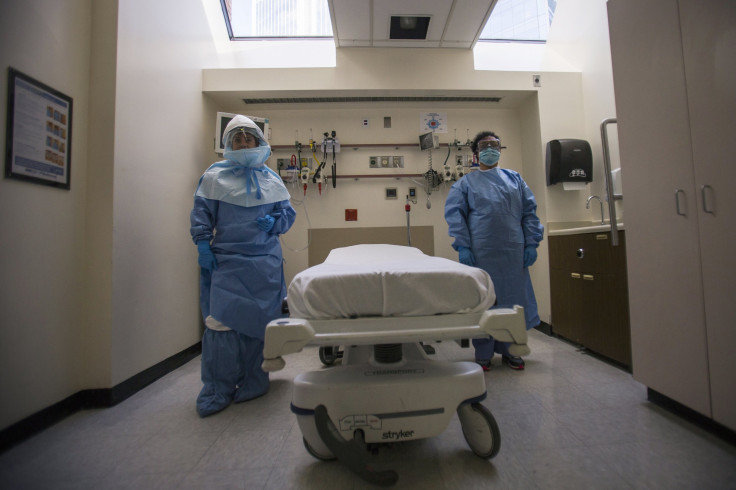Ebola In The US: The High Costs Of Preparing For An Unlikely Epidemic

Massive amounts of manpower and other resources have gone into preparing the U.S. for potential cases of Ebola virus disease, even though health officials have maintained that a major outbreak is highly unlikely. Several hospitals across the country have retrofitted rooms to be dedicated isolation units for Ebola patients, state governments have ramped up quarantine and disease-monitoring efforts, and airports have added extra health-screening measures to intercept travelers who show symptoms of the infection. But all those bells and whistles come at a cost -- one totaling tens of millions of dollars or more, according to CBS News.
The North Shore-LIJ Health System, the operator of one of the 10 hospitals in New York state getting ready to accept Ebola patients, will spend between $10 million and $15 million to upgrade its isolation unit in Glen Cove. The job has required building new walls, installing new windows, creating a dedicated laboratory and installing new negative air-pressure units, CBS reported.
The financial burdens incurred by hospitals have also included hundreds of thousands of dollars in new equipment costs. Local Fox 4 reported the University of Kansas Medical Center in Kansas City had a suspected case of Ebola this month that turned out to be a false alarm. Nonetheless, it spent $100,000 for personal protective equipment and as much as $10,000 for heavy plastic sheeting, in addition to paying for specialized medical waste removal and overtime for its nursing staff, FierceHealthFinance said. The hospital even had to replace the ceiling tiles in a room set aside for an Ebola patient with nonporous tiles.
“There were major categories of costs and expenses above and beyond what we’d necessarily have for any other patient,” Chris Ruder, vice president of patient-care services at the hospital, told the Kansas City (Mo.) Star. “For example, everything the physicians and nurses wore when they went into the patient’s room was completely disposable.” Ruder noted the hospital had six nurses with the patient at any given time. All their gloves, suits, hoods and respirators had to be thrown out every few hours.
Nyack Hospital in Nyack, N.Y., estimated the cost of preparing for an Ebola patient at between $250,000 and $500,000, the Poughkeepsie Journal reported. Westchester Medical Center in nearby Valhalla forked over $700,000 to create a containment area for a person with the disease, the newspaper said.
Several states in the U.S. have instituted new restrictions on health workers returning to the country from treating patients in Ebola-stricken West Africa. The policies take advantage of laws that allow state and federal officials to quarantine or isolate people suspected of having an infectious disease and involve quarantining for 21 days health workers who may have been exposed to the virus. Some states will allow those workers who do not have symptoms to wait out their quarantine at home. Other states will monitor and quarantine health workers in a dedicated facility. The price tag of doing so can be steep.
Authorities estimate the cost of monitoring someone quarantined in their home at about $2,000 a day or more. Quarantined people have to be monitored 24 hours a day by local authorities. About one-half the cost is embebbed in the overtime accrued by police officers who are hired to stand guard outside a person’s home, the Wall Street Journal reported. Other costs encompass paying city health officials to make regular visits of a quarantined person to check for fever and other symptoms. These costs are in addition to ancillary line items such as paying for food and other supplies as well as the lost wages of a person who is absent from work.
And who picks up the tab? State governments often swallow the costs of quarantines and hospital upgrades. It is unclear how much of those expenditures the federal government will ultimately reimburse, CBS said. The U.S. Department of Health and Human Services has provided more than $4 billion to public and private health-care facilities since 2001 through its Hospital Preparedness Program. However, that money is earmarked for preparing hospitals to fight all kinds of infectious diseases, not just Ebola.
Meanwhile, some aid organizations working in West Africa have incurred quarantine-related expenses as well, the Wall Street Journal said.
© Copyright IBTimes 2025. All rights reserved.






















